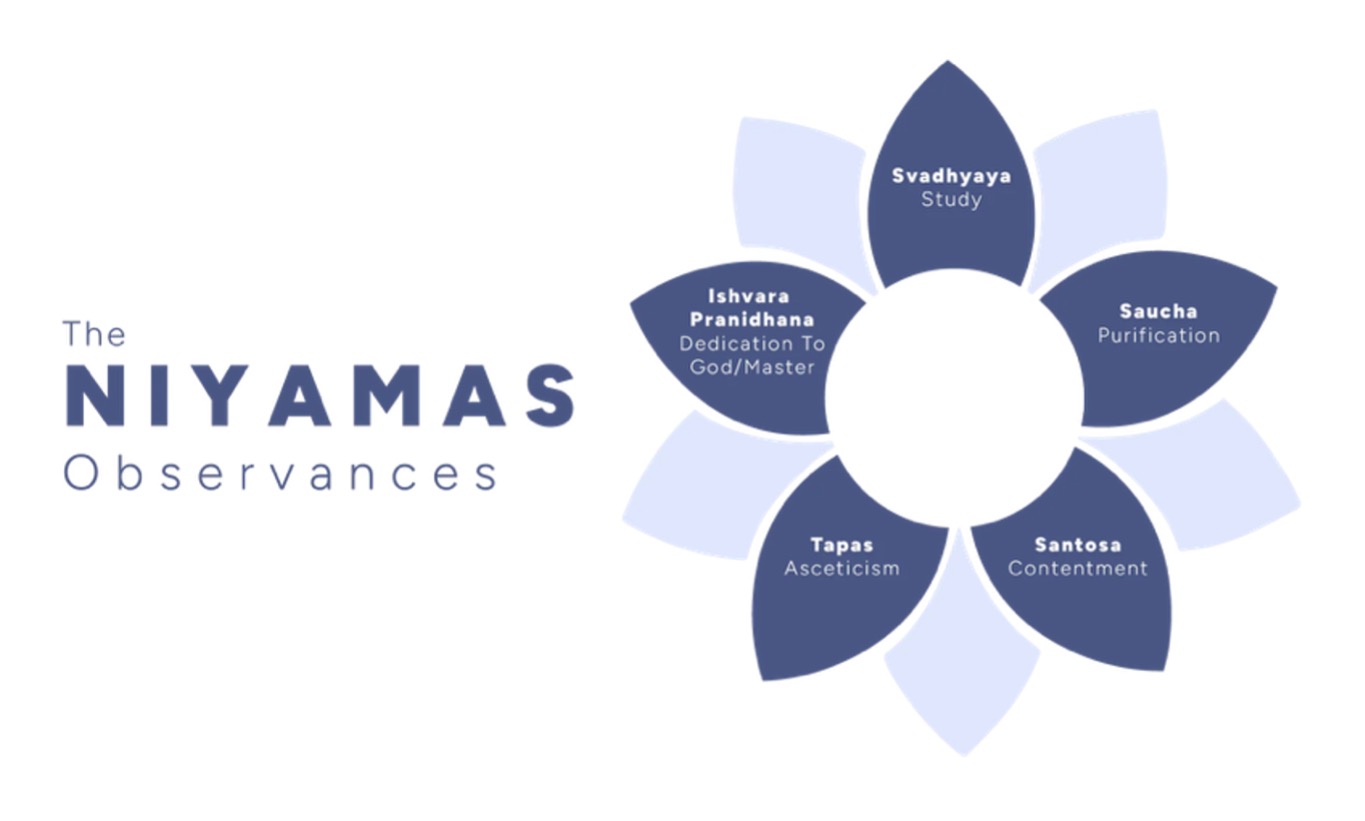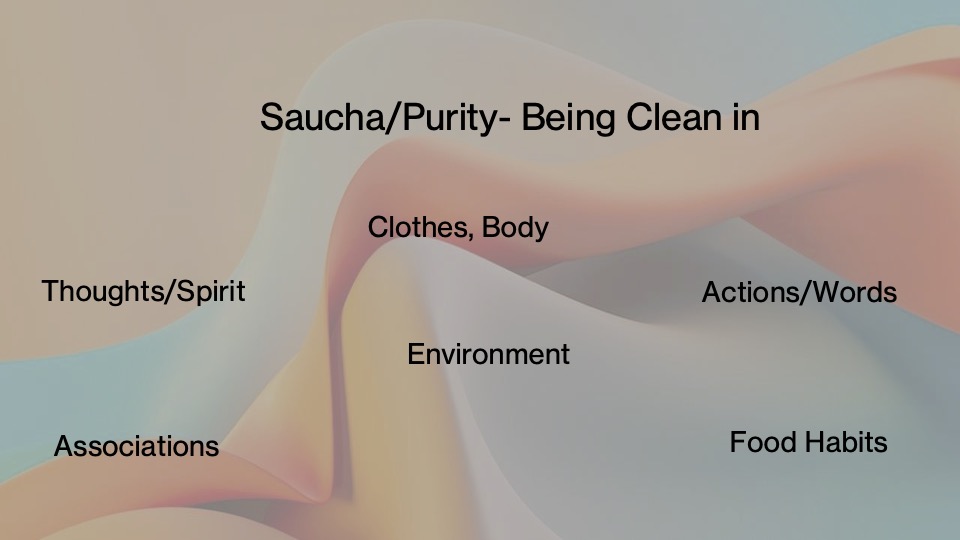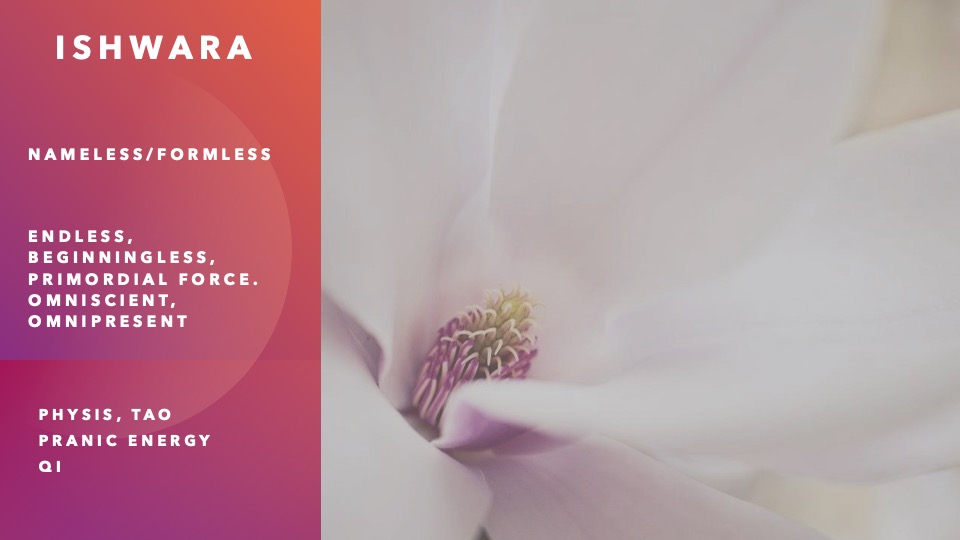Ethical Behaviours and Niyama’s. The 2nd Limb
Dear Readers, Welcome to SC Musings, Blog 42
From Yamas, the 1st, we are moving on to Niyamas, the 2nd of the 8 limbs of yoga.
Though Yama’s and Niyama’s, restraints and observances appear contradictory, they complement each other. That is, restraints support observances, and observances are connected to restraints, in guiding individuals on the path of oneness. And, of course, the purpose of this exploration is to discover how they contribute to ethical behaviors.
We will now begin with an overview of Niyama’s, and attempt to understand the deeper meaning of each of them.

The 5 Niyama’s captured in Figure 42 are:
- Saucha: Purification-Purity
- Santosa: Contentment
- Tapas: Asceticism- Containment
- Ishvara Pranidhana: Dedication to God/Master
- Svadhyaya: Self Study
We used the ‘hurry up’ driver (Clarkson,1992; Kahler & Capers, 1972) in Blog 41 to make meaning of Yama’s. Here, we are unravelling Niyama’s using communication and relationships in the Indian context.
I enjoy driving, especially to and from work- even though there are many of us competing for time and space on our roads. While driving, an ongoing non-verbal communication goes on between us fellow travellers- those going in the same and in the opposite directions respectively.
After 2 decades of driving, I took lessons from a seasoned instructor, from a well-established driving school in Coimbatore. This was more than 20 years ago and the essence of his teachings still remain. He ensured that I drive with sensitivity, respect and considerations for fellow travellers.
However, despite the learnings and good intentions, my ‘hurry up’ driver pops up and I honk, sometimes continuously. A family youngster’s remark
‘You’re disturbing the others’
made me realise that I was polluting the environment with sound. Despite the guilt following honking, I continue to do it at times. Honking and rash driving (which I don’t do), pollutes the environment, including people.
Guru Nitya presents an experiential description of Saucha/ Purity:
“Purity of mind comes only when you listen to words of purity and engage in actions of purity….being clean in environment, clothes, body, food habits, associations, actions, words, thoughts and spirit are all interlinked “ (Yati,2009. p.252, 253).”
Internal and external purification is Saucha; and, it includes maintaining it in self, others and environment. Ahimsa/Non-violence facilitates purification.
In Figure 42.1. we view the different dimensions and depths of purification.
While external purification is relatively easier to accomplish, internal purification needs to begin with Self-Reflection.

Happiness and bliss are Santosa described by Guru Nitya as ‘rejoicing in both heart and mind’ (Yati, 2009. p.254).
Taichi smiling practice in Nitya Gurukula begins with a smile on the lips, spreading to the eyes, the dantien and the whole body. Participants experience lightness and renewed energy during this practice.
Being in the here and now, also referred to as being mindful, helps us to engage with and experience bliss from greenery, flowers, landscapes, climate etc.. These moments of bliss bring a sense of oneness with the universe.
The literal meaning of Tapas according to Guru Nitya is warming; which can create both fission and fusion. When applied to identity, fission and fusion imply individuation and oneness of self.
Guru Nitya further goes on to state that
“Part of ..tapas is holding your tongue and keeping golden silence when your vocal expression is not going to help another.
Using words to teach, direct, conduct, inspire, console, and encourage another is a positive value of tapas of speech”( Yati,2009. p.255, 256)
Svadhyaya or Self Study is seemingly simple, yet, contains diverse layers. NG Holistic model of system in Figure 42.3 when used in the context of self depicts the different dimensions and layers of the self- like the:
- Physical
- Emotional
- Cognitive
- Behavioral
- Social and
- Spiritual
selves respectfully.

Self-study begins with identifying the layers and dimensions mentioned in the NG Holistic Model. In a workshop attended by the senior management team of a Multi-National Company, I found that participants were unable to answer the question ‘What is your experience?”. They wanted me to clarify the meaning of experience.
Individuals also have difficulty in differentiating thinking and emotions; this comes through when they avoid talking about emotions and share their thoughts.
Sensory awareness helps to identify and name feelings, which are often entwined with our thoughts and manifest in our behaviours, communication and relationships; and energy becomes sucked into these layers and dimensions culminating in habits. Holistic awakening within triggered by internal and/or external stimuli, is a continuous process in human development leading to Svadhyaya. Dear Reader, are You ready for this awakening??
Ishwara Pranidhana- devotion and surrendering to a Guru or Deity frees and liberates the mind and spirit. Let us now delve deeper into the meanings of Ishwara and Pranidhana.
Ishwara as a formless and endless spirit or consciousness, omnipresent and omniscient, is one way of describing the indescribable, primordial force. Physis in Greek, Pranic force in Sanskrit and Qi in Chinese are manifestations of this primal energy. Tao or the Way is another way of understanding Ishwara. This universal power is present everywhere in everything and everyone. Surrendering or devotion to one’s Guru or deity enables experiencing the force within as the Guru Within.
The descriptions of Ishwara above emanate from my understandings and practices from different modalities like yoga, Transactional Analysis, Taichi, Neuro science, Guru Nitya’s teachings and more.

Dear Reader,
We have journeyed through the different components of Nyama’s.
My experience and belief is that ethical behaviours are the outcomes of Yama’s and Niyama’s, that is restraints and observances, both internally and externally.
I invite your reflections on Yama’s and Niyama’s.
In Blog 43 we will view Asana’s and Pranayama.
Looking forward to continuing this exploration of ethical behaviours and the 8 limbs of yoga

References:
Clarkson, P. (1992). In Praise of Speed, Experimentation, Agreeableness,
Endurance, and Excellence: Counterscript Drivers and Aspiration.
Transactional Analysis Journal, 22(1), 16–20.
https://doi.org/10.1177/036215379202200103
Kahler,T., Capers, H. (1974). The Miniscript. Transactional Analysis Journal, 4(1).
26-42. https://doi.org/10.1177/036215377400400110
Niyama’s 2025: https://liforme.com/blogs/blog/8-limbs-yoga-explained
Yati, G.N.C. (2009). Living the Science of Harmonious Union. Principles and Practice of Patanjali’s Yoga Sastra. D.K. Printworld (P) Ltd. New Delhi